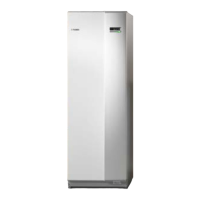CONDENSER
Heat exchanger where the hot gas state refrigerant condenses (cooled
and becomes a liquid) and releases heat energy to the house heating
and hot water systems.
CONVECTOR
Works in the same way as a radiator, but with the difference that the air
is blown out.
DISTURBANCES IN COMFORT
Disturbances in comfort are undesirable changes to the hot water/indoor
comfort, for example when the temperature of the hot water is too low
or if the indoor temperature is not at the desired level.
An operational interruption in the indoor module can sometimes be no-
ticed as disturbances in comfort.
In most cases, the indoor module notes operational interference and in-
dicates this with alarms and shows instructions on how to rectify it in
the display.
DOMESTIC HOT WATER
The water one showers in for example.
DOT, DIMENSIONED OUTDOOR TEMPERATURE
The dimensioned outdoor temperature differs depending on where you
live. The lower the dimensioned outdoor temperature, the lower the
value should be selected on "selecting a heat curve".
ELECTRICAL ADDITION
This is the electricity that, for example, an internal immersion heater
uses to cover the heating demand that the heat pump cannot manage.
EMERGENCY MODE
A mode that can be selected using the switch in the event of a fault,
which means that the indoor module does not run. When the indoor
module is in emergency mode, the home is heated using an immersion
heater.
EVAPORATOR
Heat exchanger where the refrigerant evaporates by retrieving heat en-
ergy from the air which then cools.
NIBE VVM 320Chapter 6 | Glossary84

